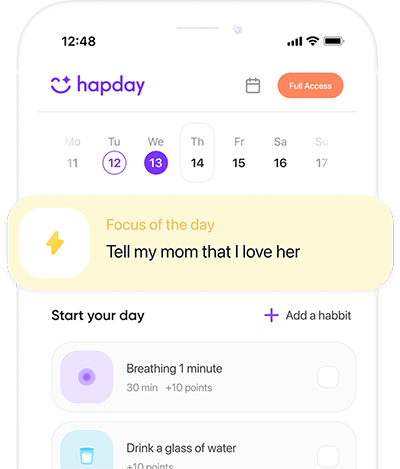Table of Contents
- Understanding Mindfulness
- The Science Linking Mindfulness to Anxiety Relief
- Everyday Mindfulness Techniques to Combat Anxiety
- Mindfulness in Cognitive Behavioral Therapy (CBT)
- Tips for Adding Mindfulness to Your Routine
- More Than Just Anxiety: The Broader Benefits of Mindfulness
- Navigating the Challenges of Mindfulness
- Conclusion
Understanding Mindfulness
Mindfulness is all about being fully present in the moment, embracing your current experience without judgment. At its core, it urges us to pay attention to our thoughts, emotions, and bodily sensations, instead of feeling overwhelmed or running from them. While its roots are entwined with ancient Eastern philosophies like Buddhism, mindfulness can be adapted into a secular practice that has found a respected place in modern psychology and therapy.
The Science Linking Mindfulness to Anxiety Relief
Mindfulness is more than just a buzzword; it’s backed by solid research. A seminal study published in JAMA Internal Medicine in 2014 revealed that mindfulness meditation programs have a moderate effect on improving anxiety, stress, and depression. This evidence stems from examining 47 trials involving 3,515 participants, showing that mindfulness can significantly enhance mental health.
How does it work? Regular mindfulness practice can actually change the brain’s structure and function. Neuroimaging studies indicate it can decrease activity in the amygdala — the brain’s fear center — and boost connectivity in areas responsible for attention and emotional regulation.
Everyday Mindfulness Techniques to Combat Anxiety
Mindful Breathing
Breathing is fundamental, but doing it mindfully can anchor us to the present and calm our racing minds.
How to Practice:
- Sit comfortably, with an upright spine, either in a chair or on the floor.
- Close your eyes, taking deep breaths through your nose and out your mouth.
- Let your breath find its natural rhythm without forcing it.
- Focus on the sensation of the breath entering and leaving your body.
- If your thoughts drift, gently guide your attention back to your breath.
Regular practice, even for a few minutes a day, can lower anxiety and improve concentration.
Mindful Walking
Walking, a common daily activity, can be transformed into a grounding mindfulness practice.
How to Practice:
- Find a quiet place to walk, like a park or garden.
- Focus on how your feet feel against the ground.
- Notice your legs’ movements, your steps’ rhythm, and the wind on your skin.
- Take in the sights, sounds, and scents around you.
- Redirect your focus to your walk if your thoughts wander.
Even a short, 10-minute mindful walk can be incredibly refreshing.
Mindful Eating
With our often hectic schedules, we tend to eat on autopilot. Slow down to reduce stress and enjoy your meals.
How to Practice:
- Pause before eating to appreciate your food’s look and smell.
- Chew slowly, savoring each bite’s flavor and texture.
- Tune into your hunger and fullness cues, eating mindfully.
- Avoid distractions, like screens, during meals.
This practice can lead to a healthier relationship with food and less stress around eating.
Body Scan Meditation
The body scan encourages relaxation by guiding attention through different body parts.
How to Practice:
- Lie comfortably on your back, arms at your sides, legs apart.
- Close your eyes, taking deep relaxing breaths.
- Slowly move your focus from your toes upward, noticing sensations, tension, or discomfort.
- Breathe into areas of tension, continuing until you’ve scanned your entire body.
A 10- to 30-minute practice can help unwind tension and anxiety.
Mindfulness Journaling
Journaling becomes a powerhouse for self-reflection when combined with mindfulness.
How to Practice:
- Dedicate 5 to 10 minutes daily for journaling.
- Write about your current thoughts and feelings without judgment.
- Reflect on positive events, gratitude, and challenges you’re facing.
- Use prompts like “What am I feeling now?” or “What am I thankful for today?”
This practice can illuminate anxiety triggers and encourage healthier coping mechanisms.
Mindfulness in Cognitive Behavioral Therapy (CBT)
Mindfulness has made its mark in therapies like Cognitive Behavioral Therapy (CBT). Mindfulness-Based Cognitive Therapy (MBCT) blends CBT strategies with mindfulness, particularly to manage anxiety and depression. A study in “The Lancet” in 2015 showed MBCT could prevent depression relapse as effectively as antidepressants. By merging mindfulness with CBT, individuals learn to shift negative thought patterns while cultivating a kind awareness of their experience.
Tips for Adding Mindfulness to Your Routine
- Start Small: Begin with brief sessions, increasing time as you grow more comfortable. Even five minutes can be impactful.
- Consistency Over Intensity: Weave mindfulness into everyday life, practicing at the same time daily, whether morning, noon, or night.
- Patience and Persistence Are Important: Like any skill, mindfulness takes time to master. Keep at it, and don’t be discouraged by a lack of immediate results.
- Curate Your Space: Dedicate a mindful spot in your home, free from distractions. Consider adding calming elements like candles or gentle music.
- Use Apps Carefully: Apps like Headspace, Calm, and Insight Timer provide guided practices and can keep you motivated.
- Mindfulness in Mundane Moments: Find mindfulness in everyday activities like brushing teeth, washing dishes, or during your commute.
More Than Just Anxiety: The Broader Benefits of Mindfulness
Mindfulness’s reach extends far beyond easing anxiety, enhancing overall mental and physical health by:
- Improving Emotional Regulation: Cultivating mindfulness sharpens your awareness and response to emotions.
- Sharpening Cognitive Skills: Research suggests mindfulness boosts attention, memory, and flexibility in thinking.
- Enhancing Sleep: It promotes relaxation, helping battle sleep troubles.
- Boosting Overall Well-being: Mindfulness bedrocks a peaceful, content lifestyle.
- Soothing Depression Symptoms: Just as it aids anxiety, mindfulness can ease depression by reframing our thinking.
Navigating the Challenges of Mindfulness
Starting mindfulness isn’t without hurdles. Common challenges include:
- Restlessness: Sitting still or focusing calmly is tough with an anxious mind.
- Mind Wandering: It’s human nature for thoughts to drift during mindfulness; the goal is to gently return focus.
- Self-Criticism: Cultivating a non-judgmental mindset can be tricky under a self-critical eye.
- Tight Schedules: Carving out time might


I’m curious about using apps for mindfulness practice—are they really effective? Sometimes I feel like they might just add another layer of distraction.
I’ve found apps helpful for guided sessions, especially when starting out—it’s nice having structure!
‘More Than Just Anxiety’ is such an important point here! Mindfulness truly enhances overall well-being and helps me sleep better at night too!
I absolutely loved this article! It presents mindfulness in such a relatable and practical way. The techniques suggested, like mindful breathing and walking, are easy to incorporate into daily life. I believe everyone should give mindfulness a try; it has the potential to truly change lives for the better.
This guide is a fantastic resource! I really appreciate how it emphasizes practical techniques for mindfulness. The body scan meditation has been a game changer for me in managing my anxiety. Just taking those few moments to check in with my body makes such a difference!
While I find some of these methods helpful, I wonder how effective mindfulness really is compared to other anxiety treatments. Has anyone experienced significant changes? I’ve tried mindfulness before, but it felt more like an added stress than a relief at times.
I totally get that! Mindfulness can be frustrating when you’re trying to force calmness in the chaos of life. Sometimes, it’s about finding what resonates with you personally.
I had similar feelings initially, but with practice, it became easier. It’s like training your brain; the more you do it, the better you get at finding that peaceful space.
This article offers an insightful look into how mindfulness can aid anxiety relief. I’ve been practicing mindful eating for weeks now, and I’ve noticed significant changes in my relationship with food and my overall mental clarity! Definitely recommending this to friends.
That’s great to hear! However, it’s crucial to recognize that individual results may vary greatly depending on personal circumstances and background.
True! But you also need to consider how someone’s lifestyle affects their ability to practice these techniques consistently.
So let me get this straight—sitting still and breathing deeply is supposed to fix all our problems now? Fantastic news; I guess we can all quit our jobs since meditation is the answer to everything!
I have mixed feelings about this article. Sure, mindfulness sounds good on paper, but I can’t help but feel skeptical about its effectiveness in real life scenarios where people face serious challenges like poverty or trauma.
You bring up valid concerns! While mindfulness may not be a catch-all solution, it could still provide some comfort or tools for those struggling in tough situations.
Reading about ‘mindful eating’ makes me wonder if that means I should chew my pizza slowly? Can we really call that ‘mindful’ when I’m just trying not to burn my tongue on hot cheese? A new diet fad perhaps? How do I eat mindfully while devouring an entire pizza? It’s all so confusing!
This post does a fantastic job of explaining the scientific background behind mindfulness practices and their impact on mental health conditions like anxiety and depression! If people would just take 5 minutes out of their day for mindful breathing or journaling as suggested, they might experience profound changes over time.
That sounds promising! Could you explain how exactly these practices alter brain function? It seems like there must be more nuances involved!
‘Understanding Mindfulness’ offers such profound insights into being present without judgment—it’s transformative!
Absolutely! Learning not to judge myself while practicing has been a huge hurdle but worth it.
While I appreciate the effort behind promoting mindfulness, I remain unconvinced of its effectiveness. The studies cited seem to lack longitudinal data that would show lasting benefits. It feels like a passing trend rather than a genuine solution for anxiety or stress management.
But isn’t it essential to look at the bigger picture? Mental health solutions aren’t one-size-fits-all. Some might thrive with mindfulness while others require different strategies.
I see your point, but many studies do show real improvements over time with consistent practice. Perhaps it’s worth considering personal experiences too? Mindfulness has helped numerous individuals find balance in chaotic lives.
‘Navigating the Challenges of Mindfulness’ definitely resonates with me—restlessness during practice can be overwhelming sometimes! Any tips on overcoming that?
‘Mindful Walking’ sounds wonderful! I love the idea of bringing awareness into something as simple as walking in nature. It’s a perfect way to combine physical activity with mental clarity and reduces my anxiety significantly!
‘Mindful Eating’ was also eye-opening for me! It completely changed my relationship with food and made meals much more enjoyable.
‘Mindful Breathing’ is essential too! It’s amazing how just focusing on your breath can ground you and help clear away the mental clutter.
The section on ‘Tips for Adding Mindfulness to Your Routine’ is super practical! I love how you suggest starting small; it feels less intimidating when you know you don’t have to commit hours right away.
Mindfulness seems like a great tool for self-care these days! With everything going on in the world, having something simple yet powerful at our fingertips is refreshing. Who knew taking deep breaths could be revolutionary?